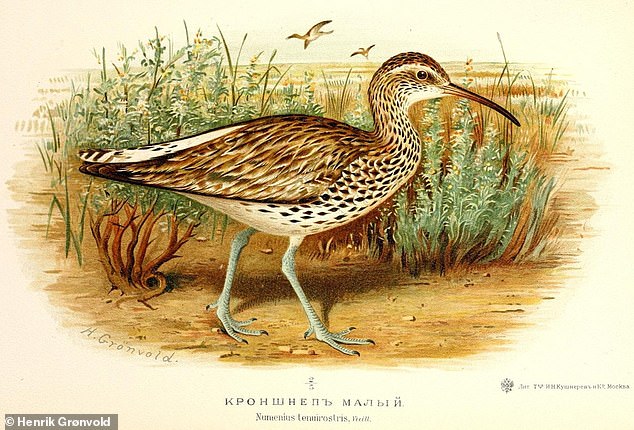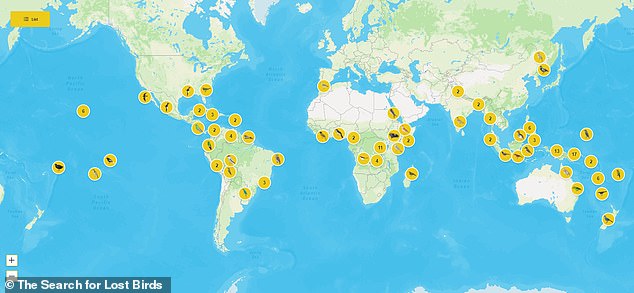Can you find Earth’s ‘lost’ birds? Scientists say 126 species have not been seen for at least a decade – and may no longer exist at all
- Experts hope their database of lost birds can spark sightings by the public
- READ MORE: These beautiful birds are most often seen in British gardens
Scientists are turning to the public to locate more than a hundred ‘lost’ birds on Earth.
A total of 126 bird species are officially considered missing worldwide because they have not been seen for at least a decade, experts say.
Among them are rare beauties including the purple-winged ground dove, the banded reed warbler and the St. Kitts bullfinch.
Meanwhile, the thin-billed curlew – the only one on the list found in Europe – has not been verified anywhere since 2004.
A new study published in Frontiers in Ecology and the Environment warns that the majority – about 60 percent – are at risk of extinction.
Among them are rare beauties including the purple-winged ground dove, the banded reed warbler and the St. Kitts bullfinch. Meanwhile, the thin-billed curlew – the only one on the list found in Europe – has not been verified anywhere since 2004
‘The Search for Lost Birds’ is a collaboration between Re:wild, American Bird Conservancy and BirdLife International.
The website includes a list of all lost species, including the region and date of last sighting, as well as a distribution map based on previous sightings.
The scientists define a “lost” bird as “a bird that has not been confirmed alive in the wild by photographic, audio or genetic information for more than ten years.”
Professor Cameron Rutt, an ornithologist at American Bird Conservancy and lead author of the study, explained that “lost” is a very different term from extinct.
Extinct when there is ‘no reasonable doubt’ that the last individual has died.
‘There are many species on this list that are in the lowest category of extinction risk,’ Professor Rutt told MailOnline.

The thin-billed curlew has not been seen anywhere since 2004. Pictured, artist’s impression by Danish naturalist Henrik Grønvold
“Even for species at high risk of extinction, it would take many years for all of these species to be listed as extinct, if indeed they no longer exist.”
As for why they are lost, some birds may be in hard-to-reach areas, preventing conservationists from conducting searches to find them.
It is also possible that these birds have been lost only to scientists, and local and indigenous communities still observe these species, as was the case with the now-found black-naped pheasant pigeon in Papua New Guinea.
The only European bird on the list is the slender-billed curlew, which breeds in southwestern Siberia and migrates across Europe to wintering areas, mainly in Morocco, Tunisia and Algeria.
“Given these endpoints, this would only occur as a vagrant in Britain,” Professor Rutt said.

The initiative’s website includes profiles of the lost birds and a world map showing their distribution based on previous sightings
‘In fact, there is only one British record – a disputed bird from Northumberland in May 1998 – which was ultimately rejected on the grounds of uncertain identification.’
Others include the Papuan Whipbird, an adorable dark green bird that has not been documented for thirteen years, and the Jamaican Pauraque, a beautiful nightjar that was last seen in 1860 and is now considered ‘critically endangered’ and possibly extinct .
Bird watchers can be the first to join the search exploring the database for birds last seen in their region.
If you think you have seen one, you are asked to contact the initiative via a special web page and share photos, videos or even audio.
